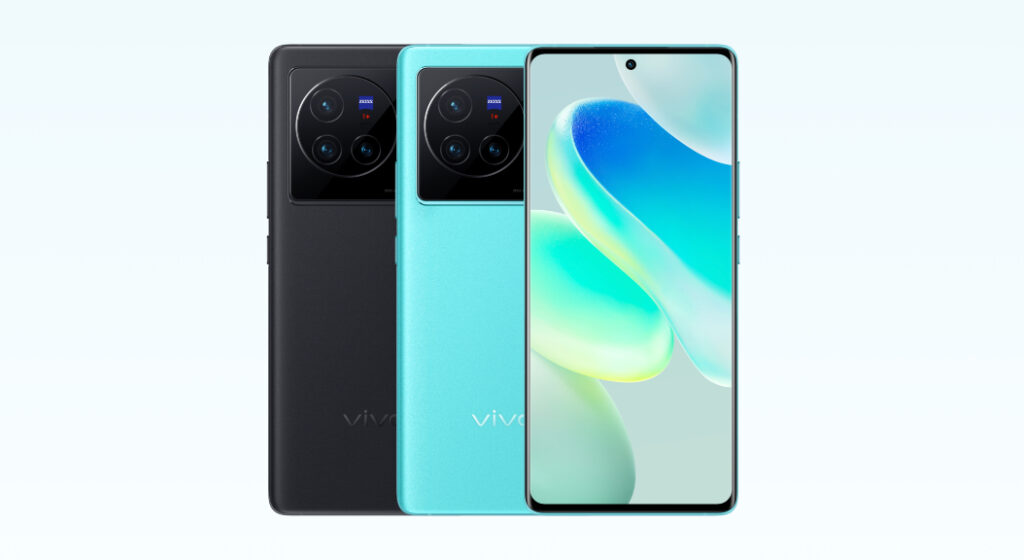
With a global launch planned for the upcoming weeks, Vivo recently unveiled its newest flagship, the Vivo X90, in the Chinese market. On paper, the phone doesn’t seem like a significant upgrade, and it uses the same hardware as the previous flagship, the Vivo X80. Nevertheless, there are a few minor adjustments that can influence your buying decision. We compare the new Vivo X90 to the previous Vivo X80 (review) in more detail. In this comparison, we’ll look at how the two phones differ from one another in terms of price, design, and specifications.
Table of Contents
Vivo X90 vs Vivo X80: Price
In China, there are four SKUs available for both the Vivo X90 and X80, starting with the entry-level model that has 8GB RAM and 128GB of internal storage and ending with the most expensive model that has 12GB RAM and 512GB of internal storage. Vivo has priced the new X90 at the same level as the X80 despite all odds, starting at RMB 3699 (around Rs 42,100) and ending at RMB 4999 (around Rs 56,900).
Vivo X90 vs Vivo X80: design, display, hardware, and camera
Design
Despite having similar hardware, Vivo has improved the X90’s look and feel. Like the X80, the phone still sports a glass sandwich design with a curved front panel. The back design is what has been altered. The camera module was cut out in a circle on the back of the X80, which featured a dual-section finish. That circular module design is still present in the X90, but the sectional design has been abandoned in favour of a cluttered-free appearance. The Vivo X90 has a refined X80 look and feel, which is something we’ll see more of on the upcoming flagships next year.
Nevertheless, the button layout is still in the same place; the power and volume buttons are on the right, while the left edge is left empty. The secondary microphone and an IR blaster are located on the top, while the SIM card slot, USB Type C port, and speaker grill are located on the device’s bottom. The X90 also now boasts of IP64 rating, something that is missing on the X80.

Display
Similar to what we saw on the X80, Vivo has picked a 6.78-inch AMOLED panel for the X90. But with a 1.5K resolution, 120Hz refresh rate, and a maximum brightness of 1300 nits, the panel has become slightly more pixel-dense. The display also features an HDR10+ certification with Widevine L1 support, enabling HD streaming on OTT platforms and HDR video streaming on YouTube. The panel has this new 1440Hz PWM rate, which is easy on the eyes and elevates the viewing experience.
However, the Vivo X80’s AMOLED panel has a Full HD+ resolution, a 120Hz refresh rate, and a maximum brightness of 1600 nits. Although the panel in this instance is an earlier E5 generation and does not receive the new PWM improvements, it still carries the HDR10+ certification and supports Widevine L1.
Processor, RAM, and storage
The brand-new MediaTek Dimensity 9200 SoC powers the Vivo X90. It is the most recent and greatest product from MediaTek, and it features the new ARM X3 performance core, which has significantly increased this new SoC’s performance. The device is available in several SKUs, with the base model coming with 8GB LPDDR5 RAM and 128GB of UFS3.1 storage and the higher storage options having the newest UFS4.0 memory option.
In contrast, the MediaTek Dimensity 9000 SoC with the outdated X2 performance core powers the Vivo X80. The phone comes in a variety of SKUs, ranging from the base model, which has 8GB LPDDR5 RAM and 128GB of internal storage, to the top model, which has 12GB RAM and 512GB of internal storage. Every model has internal storage that meets the UFS3.1 specification.
As for the software, both handsets are running the latest Android 13 operating system with Vivo’s FunTouchOS on top. FunTouchOS provides a highly customised experience over stock Android and is feature packed to the brim.

Camera
Vivo has a conservative philosophy when it comes to optics. The X90 model still has a triple camera arrangement on the back with a 50MP main sensor and support from a 12MP ultra-wide angle lens and a 12MP 2x Telephoto sensor, even if the X90 Pro models have undergone significant improvements. However, this time Vivo has also included a Time of Flight (ToF) sensor primarily to enhance the smartphone’s depth perception, leading to better portrait shots. The smartphone has a 32MP front camera, which fulfills all requirements for selfies and video chats. What is new here is Vivo’s custom V2 Imaging chip, along with Zeiss optics.
The Vivo X80 also has a triple camera arrangement on the back, with a 50MP main sensor and 12MP ultra-wide angle and 12MP 2x telephoto lenses. For video calls and selfies, a 32MP sensor is located up front. In order to improve camera performance, the X80 incorporates Zeiss optics combined with the brand’s V1+ proprietary imaging chip.
Battery
One area where Vivo has considerably improved is the battery. For instance, the X90 has a 4,810mAh battery that supports 120W fast charge. The X80, in contrast, has a modest 4,500mAh battery and supports 80W fast charging. Both the models lose on Wireless & reverse wireless charging but do come with wired reverse charging.


![[Exclusive] iQOO is evaluating launch of gaming tablet in India Thumbnail](https://www.91-cdn.com/hub/wp-content/uploads/2024/04/Vivo-Pad-3-Pro-as-iQOO-Pad-2.png?tr=h-110,q-100,pr-true)
![[Update] Vivo V30e India launch date announced; key specifications and features revealed Thumbnail](https://www.91-cdn.com/hub/wp-content/uploads/2024/04/Vivo-V30e.jpg?tr=h-110,q-100,pr-true)













